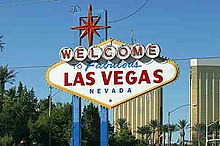Signage

Signage is any kind of graphics created to display information to a particular audience, typically wayfinding information on streets, outside and inside of buildings.
Types of signage:
- Street signage - signs stamped out of metal with lettering embossed or printed (or both).
- Neon signage - Electric lighting
- Modular signage - A signage system that consists of pre designed elementary units.
- Custom-made signage - Signs that are built from scratch to suit a specific requirement presented by a client or a specific project.
- MCFT (Modular Curved Frame Technology) — A contemporary fusion between custom-made signage and modular sign systems.
- LED sign (light-emitting diodes technology) — LED lighting
Statutory signage
In signage a pictogram is the image used to convey the message of the sign. In statutory signage pictograms follow a very specific set of colour, shape and sizing rules. In UK and EU signs the width of a sign's pictogram is set at 80% the height of the area it is printed to.
For example : On an A4 Portrait UK / EU statutory sign (210 x 297mm) using 2/3s of its area to display the pictogram 210 w x 198 H (mm) and 1/3rd for its text display, the pictogram would be 158.4 mm wide. (80% of 198 mm).
For a pictogram to work it must be instantly recognizable and understood by all. For this to work the image must be kept consistent. In its purest form a pictogram on a sign should be understood even if there is no text present. Following the standard colour and shape rules increase the likely hood of a universally understood pictogram and therefore sign.
Use of shape

Signs have very specific shapes. These shapes on signs send messages to the audience and form a set of rules that should be followed when developing signage. The particular shapes vary by between different parts of the world though.
Squares signs are used to portray information to an audience. This is found in safe condition signs, public information signs, and fire equipment signs. These signs provide information to an audience. They tell where something is, what something is, and similar information.
In contrast, a circular sign is an instruction that must be followed. Both the mandatory and the prohibition signs provide instructions that cannot be ignored.
Finally, there is the triangle of the warning sign. This is used to convey danger. It can also provide information but is primary purpose it to quickly tell you to be aware and careful.
See also
References
- Transportation for London Pictogram standard
- United Nations, Recommendations on the transport of dangerous goods. United Nations publication: 2005 (ISBN 978-92-1-139106-0)
- Wenzel, Patrick. Signage Planning Manual. Huenstetten, 2005. ISBN 1411618998.
